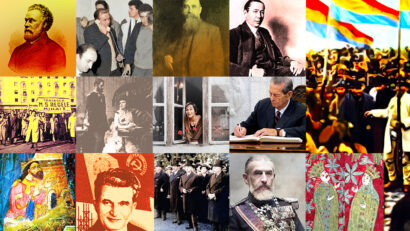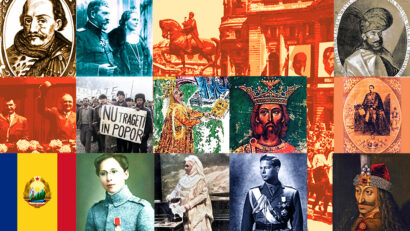The European Danube Commission
The European Danube Commission was a model of international cooperation

Steliu Lambru, 13.07.2020, 14:00
In late 18th and early 19th centuries, Europe was in turmoil. The Napoleonian wars and an influx of new ideas were changing the face of the continent. The axis of the new Europe was the river Danube, which crosses a good part of the continent, and which was said at the time that it flowed ‘shamefully into the Black Sea in an area of Tatars and Cossacks’. The image of this new Europe led to the idea of freeing it of Turkish and Russian domination, and the appearance on the map of a new state: the Romanian United Principalities.
The first major war after Napoleon ignited in 1853 between Russia and a coalition formed of Britain, France, and the Ottoman Empire. It resulted in the allied victory in 1856, and the treaty signed in Paris. The end of the Crimean War marked the beginnings of the modern Romanian state in 1859, when the decisions made by the prevailing powers led to the union of Moldavia and Wallachia, and subsequently to Romanian independence in 1878. The Danube became a free navigation route that would take one from the west of Europe, close to the North Sea, down the Rhine river and the Danube, to its eastern side, to the Black Sea. Historian Constantin Ardeleanu from Galati University underlined the capital importance of the Danube in the formation of Romania and its orientation towards the West:
“The Danube played a central role in the modernization of the Danube Principalities, as they were known in the second half of the 19th century, not only in economic terms, but also political ones. The Danube is one of the pillars for the foundation of a new Romania. The Danube is a very interesting river, because it was the object of activity for an international commission, just like the river Rhine.
The emergence of Romania on the map of Europe also meant the appearance of an international body that guaranteed the free status of the Danube. This was the European Commission of the Danube, with the participation of Austria, France, Britain, Prussia, Sardinia, Russia, and the Ottoman Empire, a pan-European institution formed after the Crimean War to secure free navigation on the river. The commission was studied by Constantin Ardeleanu, who wrote a book about it:
“This was an international institution created after the Crimean War in order to free the Mouth of the Danube from the technical and political problems hindering navigation in the region. It was the second international organization in the world, the first having been created in 1815 to regulate navigation on the river Rhine. It was different from the Rhine Commission because it was an endeavor gathering together seven European powers that guaranteed the Romanian Principalities. It turned from a short term action into a solid institution that lasted from 1856 to 1948. It was the first institution that could truly be called ‘European’.
It was often said that Romania was Europe’s Granary. The origin of this expression lies in the politics of the 19th century, when the Western powers sought an easy way to feed their people, and the Romanian Principalities were the closest and safest source. Here is Constantin Ardeleanu:
“The Danubian Principalities were a major market for grain. Europe was in full industrial revolution, and the Principalities were one of the most important source markets. The very formation of modern Romania depended on the grain trade. At the same time, Russia was the great obstacle, because it controlled the Principalities and set many obstacles against international trade. This is why the Crimean War has a major economic side. At the end of the war, a principle was established that rivers have to be freely navigable. This principle was applied to the Danube after 1856, when Russia was removed from control of the river.
The new Romanian state had the mission of rising to the new honor it was bestowed. To this end, the European powers decided its international status. Here is Constantin Ardeleanu once again:
“The role of Romania, as seen by the Great Powers, was to guarantee the freedom of the Mouth of the Danube. This resulted very clearly later, in the Berlin Treaty of 1878, when Romania’s independence was recognized, and Romania became a member of this commission. Romania had to be this buffer state between Russia and the Ottoman Empire, and Romanian had to guarantee this independence of navigation on the river.
The European Danube Commission was not a simple bureaucratic institution. It gained prestige due to its effectiveness, successful projects, and its neutrality. Again, Constantin Ardeleanu:
“It started to play a more and more active role in international politics, from the first years of its creation, when the 7 European commissioners started being seen as a balancing factor in an area that was geopolitically complicated. During the Romanian war of independence of 1877, Sulina was defended by the very existence of this commission. The Russians tried to shell the city, but they had to go to great lengths to direct their fire, simply to protect the neutrality of the commission. The commission started flying a standard to showcase its neutrality. It was an extremely efficient bureaucratic institution, with an emphasis on rules. At the end of the Great War, the European Danube Commission was used as a model of international cooperation.
The European Danube Commission ceased its activity in 1948. Part of its inheritance that can be heard daily on Radio Romania are the Danube river levels read in Romanian, Russian, and French.





























